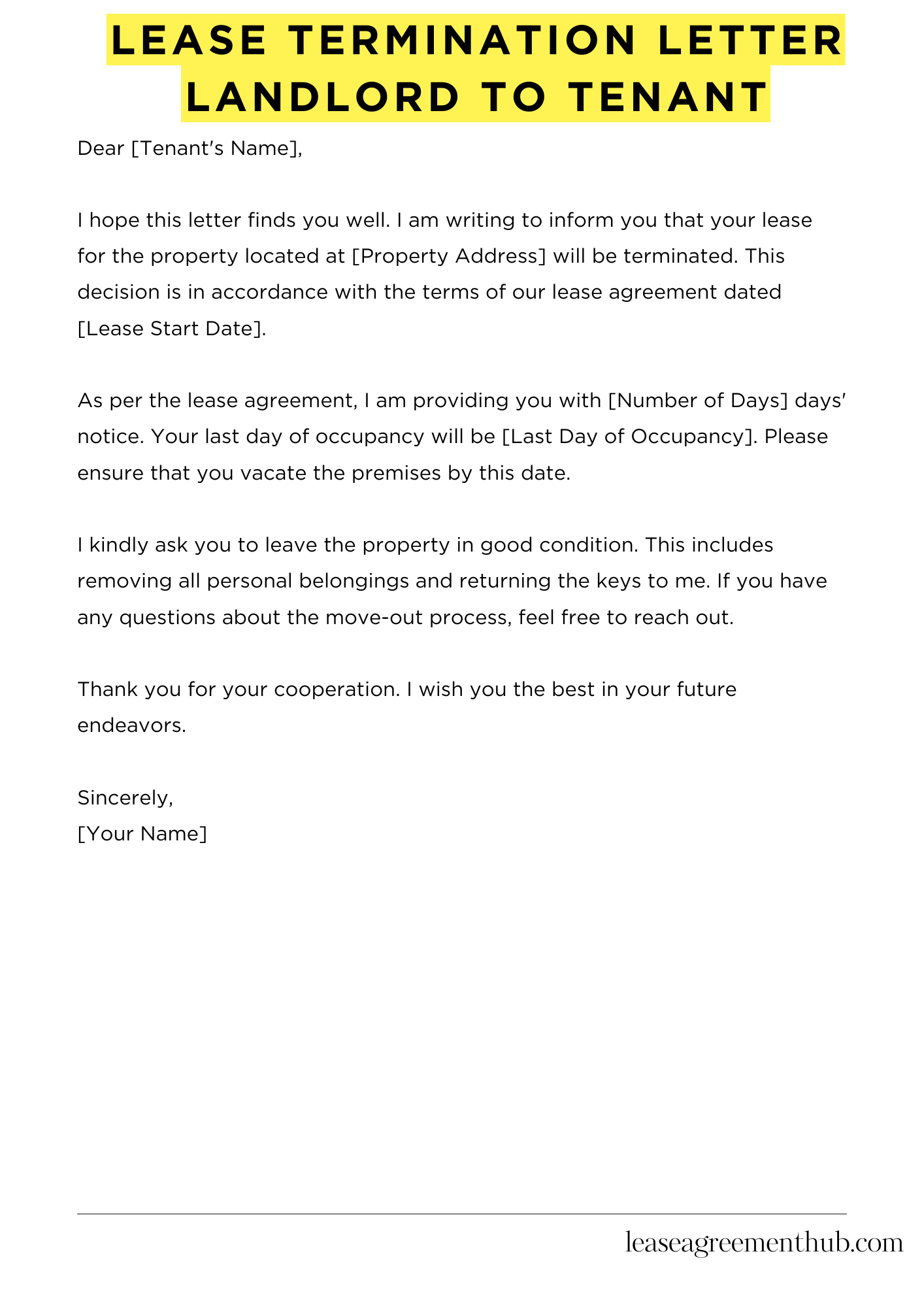A Lease Termination Letter from a landlord to a tenant is a formal notice that ends a rental agreement. Its main purpose is to inform the tenant that their lease will not be renewed or that they must vacate the property by a specific date. This letter helps to clarify the terms of the lease termination and protects the rights of both parties.
In this article, we will provide various templates and examples of Lease Termination Letters from landlords to tenants. These samples are designed to make it easier for landlords to communicate their intentions clearly and professionally. Whether you need a simple notice or a more detailed letter, we have you covered.
Writing a lease termination letter can be straightforward with the right guidance. Our collection of templates will help you craft the perfect message for your tenant. You will find everything you need to ensure a smooth transition when ending a lease agreement.
Lease Termination Letter Landlord To Tenant
[Your Name]
[Your Address]
[City, State, ZIP Code]
[Email Address]
[Phone Number]
[Date]
[Tenant’s Name]
[Tenant’s Address]
[City, State, ZIP Code]
Dear [Tenant’s Name],
I hope this letter finds you well. I am writing to inform you that your lease for the property located at [Property Address] will be terminated. This decision is in accordance with the terms of our lease agreement dated [Lease Start Date].
As per the lease agreement, I am providing you with [Number of Days] days’ notice. Your last day of occupancy will be [Last Day of Occupancy]. Please ensure that you vacate the premises by this date.
I kindly ask you to leave the property in good condition. This includes removing all personal belongings and returning the keys to me. If you have any questions about the move-out process, feel free to reach out.
Thank you for your cooperation. I wish you the best in your future endeavors.
Sincerely,
[Your Name]

How to Write Lease Termination Letter Landlord To Tenant
Understanding the Importance of a Lease Termination Letter
A lease termination letter is a formal document that notifies a tenant about the end of their lease agreement. This letter is essential for both landlords and tenants. It sets clear expectations and provides a record of communication. By writing this letter, landlords can ensure that tenants understand the timeline for moving out and any final obligations. It also protects the landlord’s rights in case of disputes.
Key Components of the Letter
When drafting a lease termination letter, certain elements must be included to make it effective. First, the letter should have the date of writing. Next, include the tenant’s name and address. Clearly state the property address as well. The letter should mention the lease termination date. Additionally, outline any final steps the tenant must take, such as returning keys or cleaning the property. Finally, provide your contact information for any questions.
Choosing the Right Tone
The tone of the letter should be professional yet courteous. It is important to remain respectful, even if there have been issues during the tenancy. A calm and clear tone helps prevent misunderstandings. Avoid using harsh language or making threats. Instead, focus on the facts and provide a straightforward explanation of the termination.
Providing Sufficient Notice
Most leases require landlords to give tenants a specific notice period before terminating the lease. This period can vary, but it is usually 30 to 60 days. Check the lease agreement and local laws to ensure compliance. Providing adequate notice is not just courteous; it is often a legal requirement. This allows tenants time to find new housing and plan their move.
Final Steps After Sending the Letter
Once the lease termination letter is sent, it is important to keep a copy for your records. This documentation can be useful in case of any future disputes. After sending the letter, be prepared for questions from the tenant. They may want clarification on the move-out process or any final payments. Maintain open communication to ensure a smooth transition for both parties.
Related: